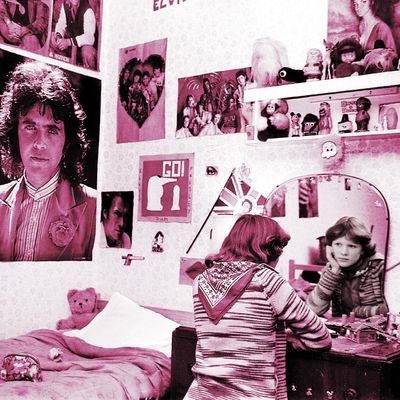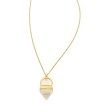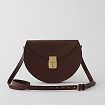
When I was a teenager in the largely pre-digital era, my bedroom walls were my Tumblr. They were plastered in pictures, mostly those I meticulously trimmed from mid-nineties issues of Spin and Rolling Stone: bands I was obsessed with, actresses whose style I wished I could imitate, the occasional photo of my friends. By surrounding myself with images of the people and things I admired, I convinced myself I was that cool, too. That I was one of them, that I could become them.
Now, we are all teen girls. Every time I click the reblog button or stumble across a stranger’s expertly curated Tumblr, I feel like I’m tapping some long-buried version of my teenage self. (Modern teens are also still practicing the ancient art of bedroom decoration — there’s a blog documenting it.) The idea that who you are is shaped by what you like is not a new idea. But now we’ve all got a way of showcasing those influences. A new Pew Research Center study shows that the vast majority of us have uploaded photos to social media — and almost as many have shared photos created by someone else. Women — especially young women — are most likely to do this, but there are big increases in photo sharing across demographic groups. While it’s hard to come by numbers about what percentage of Instagram’s 150 million users (68 percent of whom are female) are teenagers, it’s undisputed that the under-20 set are some of the most prolific ’grammers. It’s not just that teen girls are using these sites in droves. Photo-dominant social media like Instagram and Tumblr and Pinterest and Snapchat bring out the bedroom decorator in all of us.
This is a triumph of the teen-girl aesthetic approach to the world: that you surround yourself with images that you feel reflect who you are or who you want to be. This used to be derided as narcissistic or derivative, but aesthetic curation is now a widely popular, socially accepted, and venture-backed phenomenon. And while it remains gendered (consider the stereotypes of Pinterest users), the practice of sharing visual influences is gaining popularity so fast that my guess is it won’t be for long.
And in the digital era, the teen bedroom has glass walls. Everyone can weigh in. “When your picture is ‘liked’ and commented on, it is a great boost of self-confidence and brings along much gratification,” writes one 16-year-old explaining the appeal of Instagram on a parenting website. The fact that these sites are social means you know whether people are paying attention to the aesthetic identity you’re working so hard to craft. I can only imagine the power that the like button would have held over me during my tween years. Modern adults aren’t immune, either. A survey of American mothers earlier this year found that 42 percent suffered from “Pinterest stress — the worry that they’re not crafty or creative enough.”
Indeed, projecting even the most carefully curated image can recall the drama of high school, when what you wore and what you taped to the inside of your locker were revelations of your identity. When we use Instagram and Pinterest and Tumblr to project our aesthetic, they are just that: a projection. Our way of telling the world how we’d like to be seen. It looks like exhibitionism, but as anyone who’s ever been a teenage girl or spent time in close proximity to one knows, it’s never the whole story or the deeper truth. It’s an attempt to get there.
Recently an acquaintance of mine commented about how open I seem about sharing the details of my personal life online. It’s true that you can probably put together a pretty good superficial story line about my life if you follow me on every single digital platform and pay close attention. You’d know that I ate dip for dinner (again), that I spent Halloween at the Magic Castle, that my bestie’s name is Amina. These facts are all very much true, of course. But it’s only a slice of the whole story. I tend to keep the really important stuff private.
And if there’s one thing we know about teen girls, it’s that while they’re often seen as emotional exhibitionists by adults, they’re actually fiercely protective of their privacy. A teen bedroom is “the environment a person tries to create for themself while constructing new identities,” wrote Tavi Gevinson in 2011, “an attempt to run away within their own home.” That’s easy to forget as we thumb through all of the selfies on Instagram or get lost in a Tumblr blog’s infinite scroll.
Way back in 1977, Susan Sontag wrote that “industrial societies turn their citizens into image-junkies; it is the most irresistible form of mental pollution.” And the notion has persisted. The never-ending stream of social-media images is routinely declared a symptom of our collective narcissism or intellectual weakness. Again, perhaps we can take a cue from teenage girls. They’re quite aware that they’re seen as frivolous and self-absorbed, but on a deeper level they know they’re engaged in an important project: figuring out who they are and what they want to be. If we took our Instagrams and Snapchats and reblogs half as seriously as they do, perhaps we’d reach some new insight about our adult selves, too.








